Storytelling has always been a powerful way to pass down wisdom, and the Panchatantra stories are a perfect example of this tradition. These ancient Indian fables, filled with talking animals and clever lessons, continue to captivate readers of all ages. I’ve compiled 7 Panchatantra Stories in English that are not only entertaining but also teach valuable life lessons. Whether you’re a student, a parent, or just someone who loves a good story, these timeless tales will leave you with something to think about.
Why Read Panchatantra Stories?
The Panchatantra stories are more than just bedtime tales—they are life lessons wrapped in simple narratives. Originally written in Sanskrit by Vishnu Sharma, these stories were designed to teach wisdom, strategy, and ethics to young princes. Today, they remain relevant for readers worldwide. Here’s why these stories are worth reading:
- Moral Lessons – Each story comes with a meaningful lesson about life, friendship, intelligence, and honesty.
- Engaging Characters – From clever foxes to wise old turtles, these characters bring the lessons to life.
- Easy to Understand – The simple storytelling style makes them perfect for readers of all ages.
- Universal Appeal – Though written centuries ago, the wisdom in these stories still applies today.
7 Panchatantra Stories in English You’ll Love
Here’s a sneak peek at the 7 Panchatantra Stories in English that I’ve written:
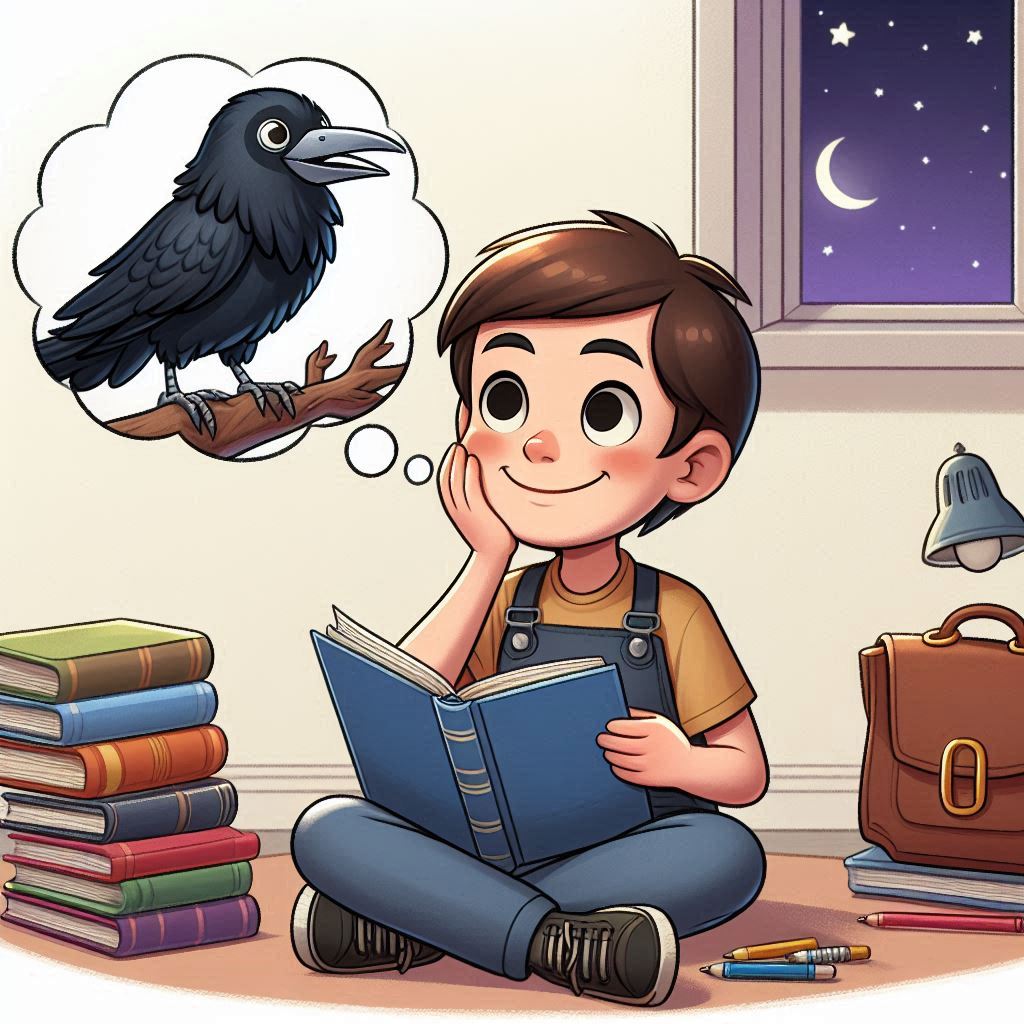
How the Crow Got Its Black Colour
One day, a curious boy named Aarav was flipping through a picture book when a question popped into his mind. He rushed to his mother and asked, “Mom, why are crows black?”
His mother smiled and said, “Well, believe it or not, there was a time when crows were actually white!” Then, she began to tell him an old story.
A long time ago, the sun had a special mission for a crow. He handed the crow a silk bag containing a precious ruby and asked him to deliver it to a princess on Earth. The crow, feeling honored, promised to complete the task.
As he flew over a village, he suddenly felt hungry. Spotting a tree, he decided to take a short break. He carefully hung the silk bag on a small branch and flew off in search of food.
While he was away, a greedy merchant passing by noticed the bag. Curious, he peeked inside and saw the shining ruby. Unable to resist, he stole the gem and replaced it with some worthless trash before slipping the bag back onto the branch.
Unaware of what had happened, the crow returned, picked up the bag, and continued his journey. When he finally reached the princess and presented her with the gift, she opened the bag—only to find garbage inside! Outraged, she felt insulted and refused to believe the crow’s story.
When the sun learned about the crow’s mistake, he was furious. His fiery glare burned the crow’s feathers, turning them black forever. From that day on, all crows were born with black feathers, as a reminder of that fateful mistake.
Moral of the Story
Carelessness can lead to irreversible consequences. Always be responsible for the tasks you are given.
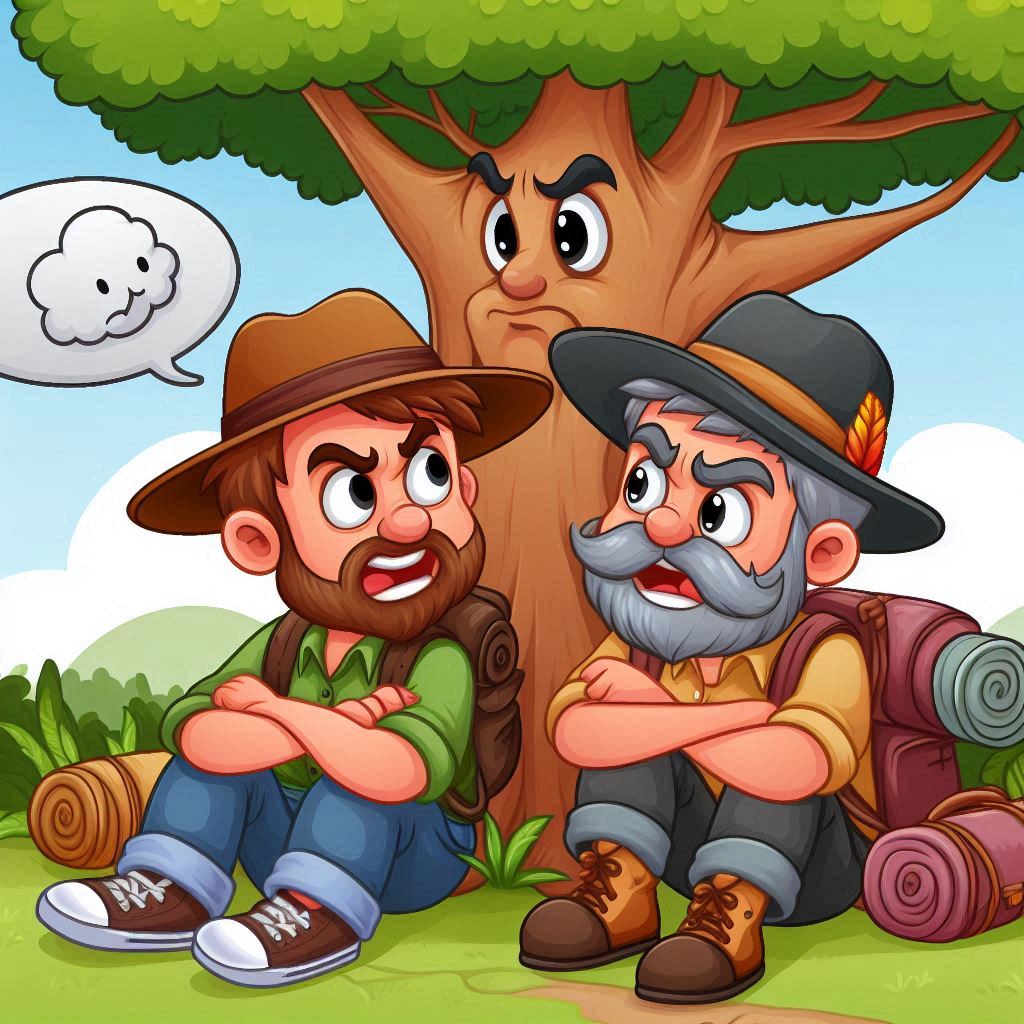
The Plane Tree
On a hot summer afternoon, two travelers were walking along a dusty road. The scorching sun beat down on them, making their journey unbearable. Spotting a large, leafy tree by the roadside, they hurried over to rest in its shade.
As they lay beneath the tree, enjoying the cool breeze, one of them glanced up and said, “This tree is useless. It doesn’t bear any fruit, and its leaves just make a mess on the ground.”
Before they could continue their complaints, a deep voice echoed from the tree itself: “Ungrateful travelers! You rest beneath my shade, enjoying the relief I provide, yet you call me useless? How often do people fail to appreciate the blessings they receive!”
The travelers were stunned into silence, realizing their mistake.
Moral of the Story
The greatest blessings in life are often the ones we take for granted.

The Clever Crows and the Snake
Once upon a time, a family of crows lived in a massive banyan tree. The family consisted of Father Crow, Mother Crow, and their little ones. They lived peacefully until one day, a giant snake slithered into the hollow at the base of the tree and made it his home.
The crows were alarmed but had no way to drive the snake away. Their worst fears came true when Mother Crow laid eggs again. Soon, baby crows hatched, filling the tree with cheerful chirps. But when the parent crows flew out in search of food, the cunning snake crept up and devoured the helpless chicks.
When the crows returned, they were heartbroken. They searched everywhere but could not find their babies.
Months passed, and Mother Crow laid more eggs. This time, she stayed back to guard them while Father Crow searched for food. But the snake was fearless. Ignoring her presence, it slithered up the tree and attacked the nest once again. Though Mother Crow and other birds fought bravely, the snake was too strong. By the time Father Crow returned, all he saw was sorrow.
Heartbroken, Mother Crow wanted to leave the tree. But Father Crow refused to give up. “This is our home, and we will not let the snake drive us away!” he declared. Seeking help, he approached a wise old fox.
The fox listened carefully and devised a clever plan. He instructed the crows to go to the riverbank the next morning, where the royal ladies would be bathing. Their clothes and jewelry would be left under the watch of distant servants.
“Steal a valuable necklace and fly toward the banyan tree,” the fox advised. “Make as much noise as you can so the servants follow you. Then, drop the necklace into the snake’s hole.”
The next morning, the crows did exactly as planned. Mother Crow grabbed a pearl necklace and flew off, while Father Crow cawed loudly to attract attention. The servants chased after her, reaching the banyan tree just as she dropped the necklace into the snake’s hole.
Curious, the servants used a long stick to retrieve the necklace. But as they poked around, the angry snake slithered out, hissing menacingly. Startled, the servants attacked and killed the snake on the spot.
From that day on, Mother Crow and Father Crow lived happily in their tree, free from danger.
Moral of the Story
Clever thinking and teamwork can defeat even the strongest enemy.

The Wolf and the Clever Dog
One evening, a hungry Wolf was prowling near a village when he spotted a Dog. But this was no plump, well-fed dog—it was thin, bony, and hardly worth the effort of a hunt.
Still, the Wolf’s hunger got the better of him, and he slowly crept toward the Dog. Seeing the danger, the Dog cautiously backed away and quickly thought of a plan.
“My dear sir,” the Dog said, dodging a snap of the Wolf’s teeth, “I wouldn’t make a satisfying meal right now. Just look at me—I’m nothing but skin and bones! But let me tell you a little secret.”
The Wolf paused, intrigued.
“In a few days, my master is hosting a grand wedding feast for his daughter. I will feast on the leftovers and grow plump and juicy. Wouldn’t it be better to eat me then?”
The Wolf licked his lips at the thought of a fat, delicious meal. “That does sound much better,” he agreed, and with that, he tightened his belt and went away, promising to return.
A few days later, the Wolf came back, eager for his promised meal. He found the Dog resting inside his master’s yard and called out, “Come on out! It’s time for me to eat you.”
The Dog grinned and replied, “Oh, I’d be happy to, but you see, the porter must open the gate first.”
Just then, the Wolf noticed a massive guard dog lurking near the entrance. He immediately recognized it as a fierce beast he had encountered before—the kind that wouldn’t hesitate to chase him down. Realizing he had been tricked, the Wolf turned and fled as fast as he could, never to return.
Moral of the Story
Don’t rely on the promises of those who have a reason to deceive you.

The Cat and the Fox
One day, a Cat and a Fox were traveling together through the forest. As they walked, they occasionally stopped to snack on whatever they could find—a stray mouse here, a fat chicken there. To pass the time, they began to argue.
“You think you’re clever, don’t you?” said the Fox smugly. “Well, I know a whole sackful of tricks to escape danger!”
The Cat, unfazed, replied, “I only know one trick, but it’s a really good one.”
The Fox scoffed. “Just one? That’s nothing compared to my many clever escapes.”
Before the argument could continue, they heard the distant sound of a hunter’s horn and the fierce barking of hunting dogs.
In an instant, the Cat leaped up a tree, climbing swiftly to safety among the branches. From above, he called down, “This is my one trick! Let’s see how well your sackful of tricks works now.”
The Fox, however, was in trouble. With so many escape plans in his mind, he couldn’t decide which one to use. He darted in different directions, trying to outwit the dogs. He ran in circles, entered burrows, and tried every trick he could think of. But none of them worked.
The hounds quickly caught up to him, and that was the end of the boastful Fox.
Moral of the Story
Common sense and quick action are always better than overcomplicated tricks.
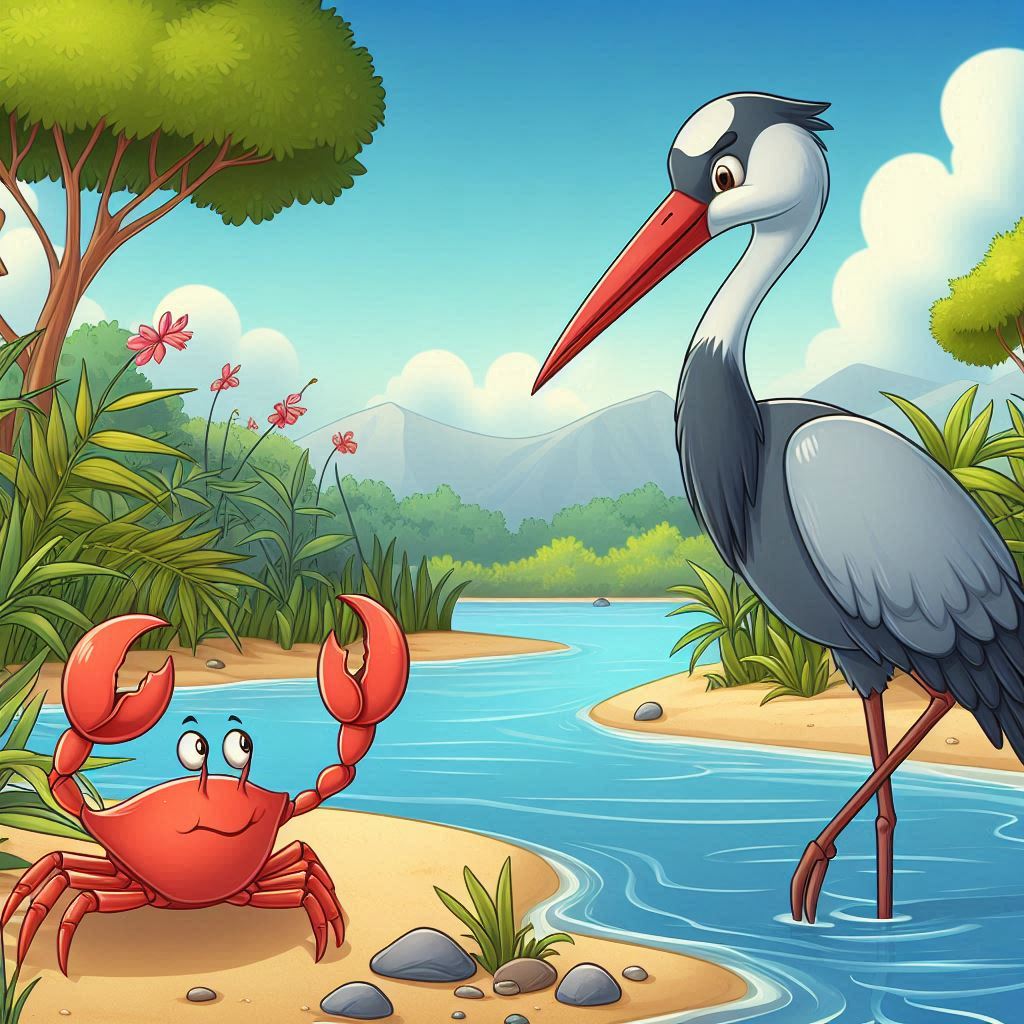
The Cunning Crane and the Clever Crab
Once upon a time, an old and clever Crane found it difficult to catch fish. As days passed, hunger grew, and the Crane feared it might starve. So, it came up with a wicked plan to trick the fish into becoming easy prey.
One day, the Crane sat by the riverbank with a sorrowful expression. Seeing this, the curious fish gathered around and asked, “What’s wrong?”
With a deep sigh, the Crane replied, “A great famine is coming soon. The water in this pond will dry up, and all of you will die. But I can help you! I know of a large lake near the mountains where you will be safe.”
Frightened by the Crane’s words, the fish believed the story and pleaded for help. The Crane, pretending to be kind, agreed to carry them to the new lake—one at a time.
But instead of saving them, the greedy Crane flew to a dry patch of land nearby and devoured each fish, leaving behind nothing but bones. Day after day, it continued the trick, feasting without effort.
One day, the Crane decided to eat a Crab. It lifted the Crab onto its back and set off. As they flew, the Crab noticed a pile of fish bones scattered across barren land. Suspicious, the Crab asked, “Where is the lake? And why are there so many skeletons below?”
The Crane chuckled and confessed proudly, “Foolish creature! There is no lake. I tricked the fish, ate them all, and now it’s your turn!”
But the Crab was quick-witted. Before the Crane could act, the Crab used its sharp claws to clamp down on the Crane’s neck with all its strength. The Crane struggled, but the Crab did not let go until the Crane fell lifeless to the ground.
With that, the clever Crab saved itself and put an end to the Crane’s deceit.
Moral of the Story
Never believe hearsay without verifying the truth. Blind trust can lead to danger.
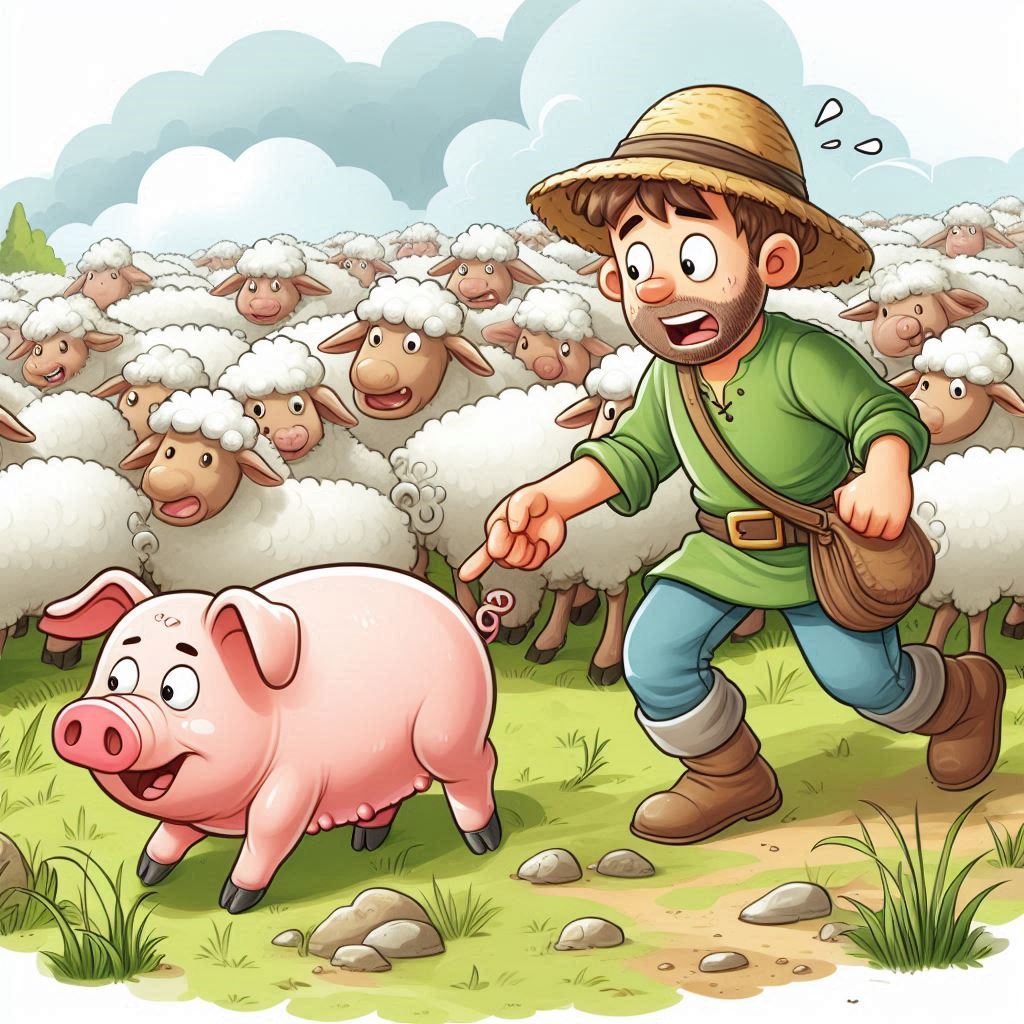
The Sheep and the Pig
One day, a shepherd spotted a fat Pig wandering in the meadow where his Sheep were grazing. Wasting no time, he grabbed the Pig.
The moment the shepherd laid his hands on it, the Pig let out a loud, ear-piercing squeal, struggling with all its might to break free. The noise was so intense that it seemed as if the Pig was being terribly hurt.
Curious, the Sheep watched the scene unfold. They found the Pig’s reaction both surprising and amusing. As they followed the shepherd to the pasture gate, one of the Sheep finally asked, “Why are you making such a terrible fuss? The shepherd often takes one of us, but we never behave like that.”
Still kicking and squealing, the Pig replied, “That’s easy for you to say! When he takes you, he only wants your wool. But when he takes me, he wants my bacon! Gree-ee-ee!”
Hearing this, the Sheep fell silent, realizing the Pig had a very different reason to be afraid.
Moral of the Story
It’s easy to be brave when the danger isn’t yours to face.
Each of these Panchatantra stories in English carries a unique moral, making them both entertaining and insightful.
Final Thoughts
The Panchatantra stories in English are not just for children—they offer wisdom that resonates with people of all ages. Through simple yet powerful storytelling, these tales teach us about life, strategy, and human nature. Whether you’re looking for inspiration, a bedtime story, or just a good read, these fables have something for everyone.
So, if you’re ready to dive into the world of wisdom and wit, start reading these amazing stories today!
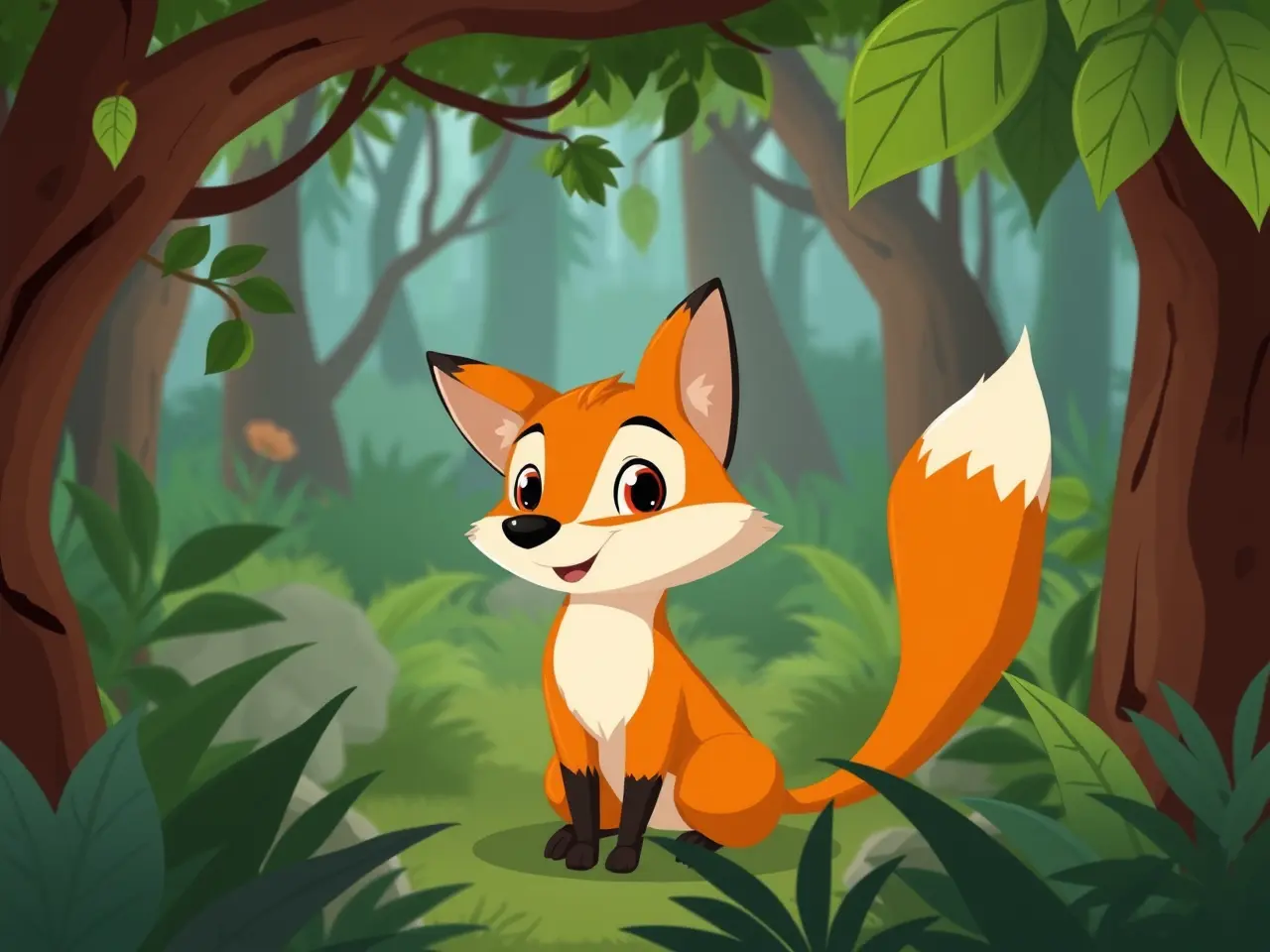
2 thoughts on “Panchatantra Stories in English | Panchatantra Stories”